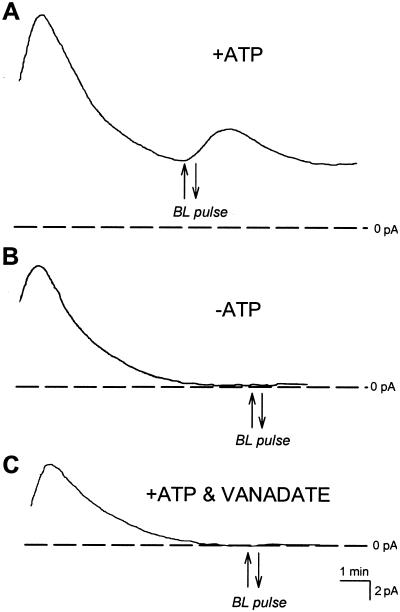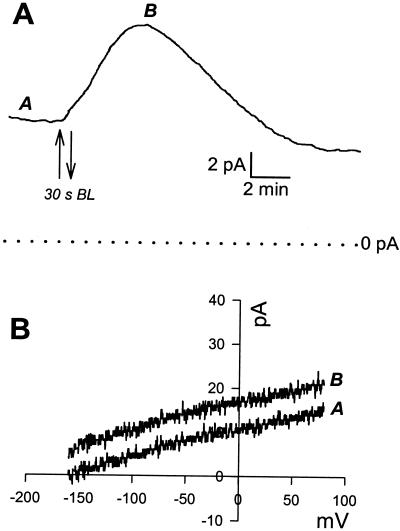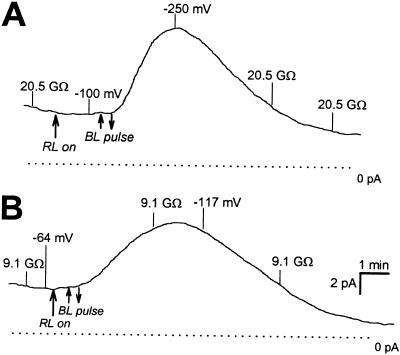Vol. 125: 329–338, 2001
Taylor, A.R., and Assmann, S.M. Apparent Absence of a Redox Requirement for Blue Light Activation of Pump Current in Broad Bean Guard Cells.
Figures 2, 3, and 4 were not printed in the correct order. The correctly numbered figures with legends are reprinted on pp 2207–2209.
Figure 2.
Steady-state- and BL-stimulated pump currents require ATP and are inhibited by vanadate. A, A typical recording with 5 mm ATP in the pipette under saturating RL. The cell responded to a 30-s pulse of BL with a typical transient increase in pump current. B, When ATP is absent from the pipette, cell currents quickly decay to 0 pA under saturating RL and are unresponsive to a pulse of BL. C, Inclusion of ATP and 20 μm vanadate in the pipette causes inhibition of pump current. All cells where pump current was inhibited by vanadate were unresponsive to BL pulses.
Figure 3.
H+-ATPase activation by a pulse of BL. Saturating RL background illumination was switched on before the beginning of the trace. A, Once stable baseline current is achieved a pulse of BL causes a transient increase in pump current. B, I/V ramps conducted before (A) and at the peak (B) of the response in A show the parallel shunt in pump current.
Figure 4.
The effect of plasma membrane H+-ATPase currents on membrane potential. The two traces show the pump current measured with ATP in the pipette. Membrane potential and input resistance are indicated on the traces at steady state and during BL-activated stimulation of pump current. Note the insensitivity to saturating RL illumination.





